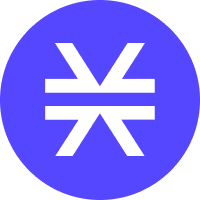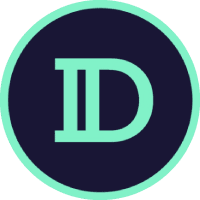


Bankcoin PreisBANK
Wie denken Sie heute über Bankcoin?
Über Bankcoin (BANK)
Kryptowährungen haben in den letzten Jahren weltweit an Bedeutung gewonnen. Eine dieser digitalen Währungen ist Bankcoin, die aufgrund ihrer einzigartigen Features und ihres historischen Hintergrunds Zuwendung erhält. Bankcoin ist eine dezentrale Kryptowährung, die auf der Blockchain-Technologie basiert. Sie wurde entwickelt, um den traditionellen Bankensektor zu revolutionieren und transparentere und sicherere Finanztransaktionen zu ermöglichen. Eine der bemerkenswerten Funktionen von Bankcoin ist die Anonymität der Transaktionen. Benutzer können Gelder über die Blockchain senden und empfangen, ohne ihre persönlichen Identitäten offenlegen zu müssen. Dies bietet sowohl Privatsphäre als auch Sicherheit für die Benutzer. Eine weitere Eigenschaft von Bankcoin ist die Geschwindigkeit der Transaktionen. Im Vergleich zu traditionellen Banküberweisungen, die oft Tage oder sogar Wochen dauern können, können Bankcoin-Transaktionen in kürzester Zeit abgeschlossen werden. Dies ermöglicht eine schnellere Abwicklung von Zahlungen und Finanzgeschäften. Ein weiterer wichtiger Aspekt von Bankcoin ist die begrenzte Gesamtmenge an Münzen, die jemals existieren werden. Anders als traditionelle Währungen, die von Zentralbanken gedruckt und kontrolliert werden können, ist Bankcoin auf eine feste Anzahl begrenzt. Dies macht sie widerstandsfähig gegen Inflation und andere wirtschaftliche Faktoren. Bankcoin wurde auch entwickelt, um kostengünstigere Transaktionen anzubieten. Im Vergleich zu traditionellen Bankgebühren, die oft hoch sein können, fallen bei Bankcoin-Transaktionen niedrigere Gebühren an. Dies ermöglicht es Benutzern, Gelder effizienter zu überweisen und finanzielle Transaktionen zu erleichtern. Die historische Bedeutung von Bankcoin liegt in ihrer Rolle bei der Demokratisierung des Finanzsystems. Durch die Bereitstellung einer dezentralen digitalen Währung ermöglicht Bankcoin den Menschen, unabhängig vom Standort und den traditionellen Bankgrenzen auf Finanzdienstleistungen zuzugreifen. Dies kann insbesondere für Menschen in Entwicklungsländern von Vorteil sein, die möglicherweise keinen Zugang zu herkömmlichen Bankkonten haben. Insgesamt bietet Bankcoin durch seine einzigartigen Features und seinen historischen Hintergrund viele Vorteile für die Nutzer. Von der Anonymität der Transaktionen bis hin zur Geschwindigkeit und Kosteneffizienz bietet Bankcoin eine alternative Möglichkeit, Gelder zu überweisen und finanzielle Transaktionen durchzuführen. Mit der zunehmenden Akzeptanz und Nutzung von Kryptowährungen wird Bankcoin voraussichtlich weiterhin an Bedeutung gewinnen und einen Beitrag zur Entwicklung des Finanzsystems leisten.
AI-Analysebericht über Bankcoin
Live Bankcoin Preis heute in EUR
Bankcoin Preisverlauf (EUR)
 Niedrigster Preis
Niedrigster Preis Höchster Preis
Höchster Preis 
Was ist der höchste Preis von Bankcoin?
Was ist der niedrigste Preis von Bankcoin?
Bankcoin Preisvorhersage
Wann ist ein guter Zeitpunkt, um BANK zu kaufen? Sollte ich BANK jetzt kaufen oder verkaufen?
Wie hoch wird der Preis von BANK in 2026 sein?
Wie hoch wird der Preis von BANK in 2031 sein?
FAQ
Wie hoch ist der aktuelle Preis von Bankcoin?
Wie hoch ist das 24-Stunden-Trading-Volumen von Bankcoin?
Was ist das Allzeithoch von Bankcoin?
Kann ich Bankcoin auf Bitget kaufen?
Kann ich mit Investitionen in Bankcoin ein regelmäßiges Einkommen erzielen?
Wo kann ich Bankcoin mit der niedrigsten Gebühr kaufen?
Bankcoin Bestände nach Konzentration
Bankcoin Adressen nach Haltezeit

Globale Bankcoin Preise
- 1
- 2
- 3
- 4
- 5
Neue Listings auf Bitget
Mehr kaufen
Wo kann ich Krypto kaufen?
Videobereich - schnelle Verifizierung, schnelles Trading

BANK Ressourcen
Bankcoin Bewertungen
Bitget Insights


Verwandte Assets
Zusätzliche Informationen über Bankcoin
Coin-Übersicht
Coin bezogen
Trading bezogen

































